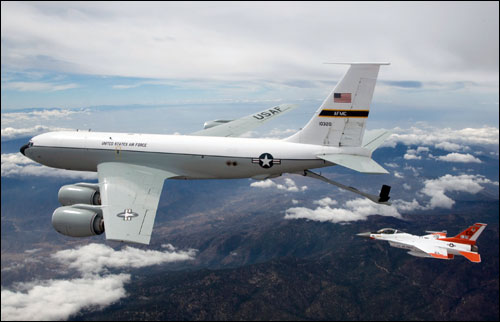Unless you work on one of the U.S. Air Force‘s KC-135 tankers, which refuel aircraft during flight, you’ve probably never given much thought to how the people onboard do their jobs. When an airplane approaches a KC-135, the person operating the boom that is lowered to dispense the fuel must also record information about the plane, such as its tail number or squadron. The boom operator identifies the plane either visually or by radio.
That process is time-consuming, inefficient and sometimes wasteful. People make mistakes, and if a plane cannot be identified because the view or communications were impaired, the fuel cannot be charged to the squadron that used it. Steve Walden, test operations project manager at the Edwards Air Force Base’s Air Force Flight Test Center (AFFTC), says the government loses millions of dollars every year because fuel is unaccounted for or allocated incorrectly.
But it may not be long before an RFID system, called Automatic Receiver Aircraft Identification (ARAI), automates the process. The system, developed by Boeing, would equip aircraft with ultrahigh-frequency (UHF) RFID tags and KC-135 tankers with UHF readers.
The ARAI system is already in Phase 2 of testing. On April 7, the AFFTC performed a flight test with a KC-135 test tanker and an F-16 Fighting Falcon. During the flight, the AFFTC tested the ARAI system’s ability to accurately identify the F-16 and gauge the amount of fuel it received.
Walden describes the system as “fly-up inventory control,” because it makes air-to-air refueling more efficient and economical. “ARAI is a more accurate way to calculate what fuel is being transferred to the receiving plane,” he says. “We can tabulate the data more accurately than we can having people do it by hand.”
Once Phase 2 testing is complete, Boeing may revise the ARAI system before further testing, but if all goes well, RFID could soon be managing inventory at 30,000 feet. “We want to streamline the process of capturing refueling data and make it more automated,” Walden says. “If we can use RFID, there will be less paperwork and fewer data-collection errors, which will save the government money.”
Photo: Chad Bellay/USAF


